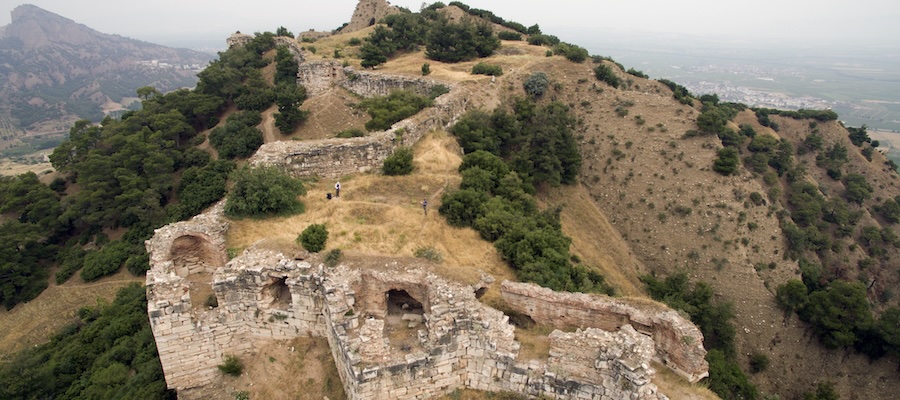The largest standing architecture at the ruined city of Sardis is not its famous Temple of Artemis, the fourth largest Ionic temple of antiquity, but is instead the massive but little-published fortification that sits on its Acropolis. This paper delivers preliminary results from new study of the Byzantine fortifications on the Acropolis at Sardis, part of the larger Harvard-Cornell Exploration of Sardis ongoing since 1958. Composed entirely of thousands of architectural blocks and sculpture recycled from older Iron Age and Roman monuments of Sardis, our understanding of the Acropolis fortifications hinges on three questions considered here. How has the Acropolis, composed of extraordinarily friable loose conglomerate subject to erosion and earthquake, changed since Antiquity? When were the Acropolis fortifications constructed? Possibilities range from c. 550 during the reign of Justinian to as late as c. 850. And, how and by whom were the Acropolis fortifications constructed? Set at a remarkably steep elevation, the labor for transport and construction with reused materials was extraordinary. No minor monument of the “Dark Ages”, the fortifications on the Acropolis at Sardis stand as a remarkably well-preserved complex of defensive architecture that sheds light on the priorities and capacities of communities in Byzantine Anatolia.
This lecture will take place live on Zoom, followed by a question and answer period.
